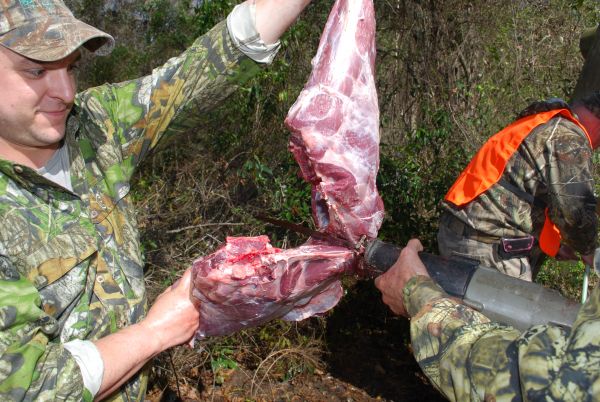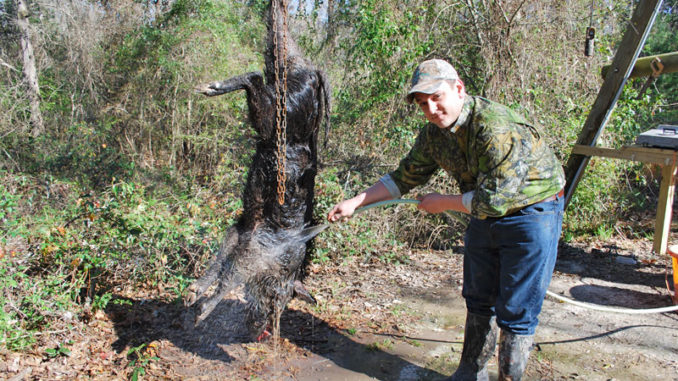
Step 1: The pig should be hung from a hind leg and thoroughly hosed with lots of fresh water.
Step 2: Cut deeply around the anus, effectively “coring” it, and carefully push it into the body cavity of the hog.
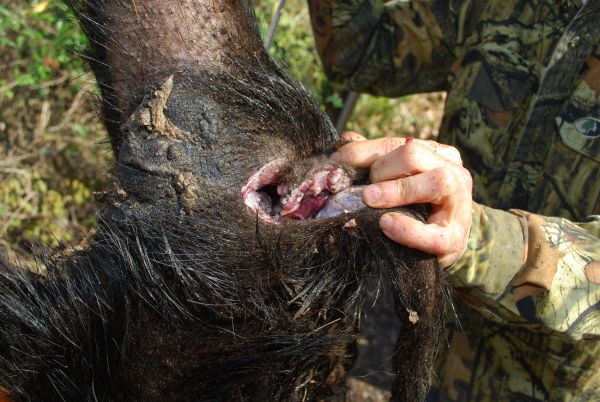 Step 3: Cut from the hole formed by coring the anus up each hind leg to the hock, and then completely ring the skin of the leg with the knife.
Step 3: Cut from the hole formed by coring the anus up each hind leg to the hock, and then completely ring the skin of the leg with the knife.
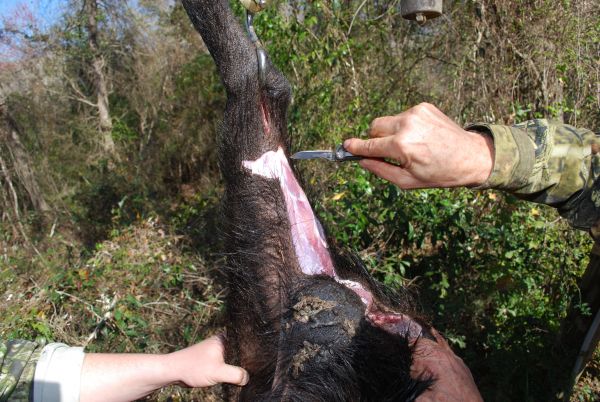 Step 4: Cut the skin on each side of the scrotum and penis, and then extend a single cut downward to near the front of the rib cage.
Step 4: Cut the skin on each side of the scrotum and penis, and then extend a single cut downward to near the front of the rib cage.
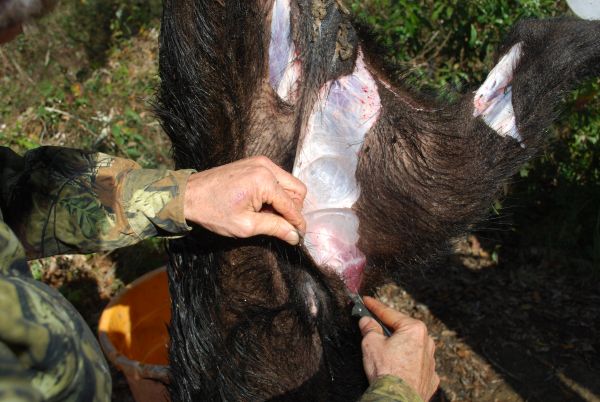 Step 5: Cut the scrotum and penis free while pulling on them with one hand, and then discard.
Step 5: Cut the scrotum and penis free while pulling on them with one hand, and then discard.
 Step 6: Extend the cut on the center of the rib cage down the inside of each foreleg to just above the hock, and then ring the skin around the leg at that point.
Step 6: Extend the cut on the center of the rib cage down the inside of each foreleg to just above the hock, and then ring the skin around the leg at that point.
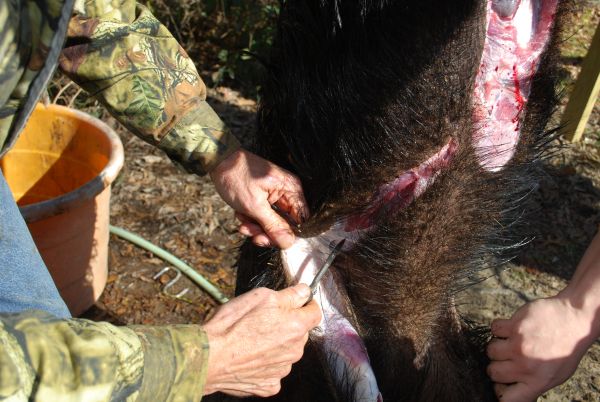 Step 7: Beginning at the hock of the leg, the hog is hung from and followed by the other leg, begin skinning the carcass by cutting the connective tissue beneath the skin and pulling the skin downward at the same time.
Step 7: Beginning at the hock of the leg, the hog is hung from and followed by the other leg, begin skinning the carcass by cutting the connective tissue beneath the skin and pulling the skin downward at the same time.
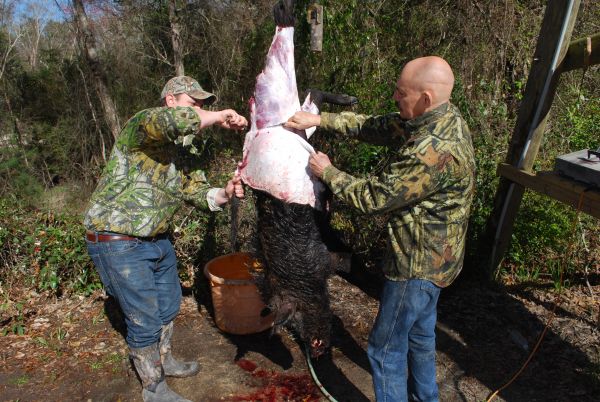 Step 8: After the carcass has been skinned to the neck, use a reciprocating saw to cut off the head (which Falgoust saves), the forelegs and the free rear leg.
Step 8: After the carcass has been skinned to the neck, use a reciprocating saw to cut off the head (which Falgoust saves), the forelegs and the free rear leg.
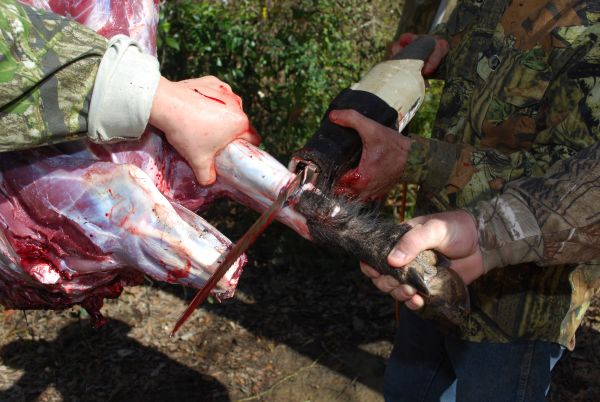 Step 9: The ungutted carcass is washed to remove any hair, dirt, bone particles or marrow, as well as to help cool it off.
Step 9: The ungutted carcass is washed to remove any hair, dirt, bone particles or marrow, as well as to help cool it off.
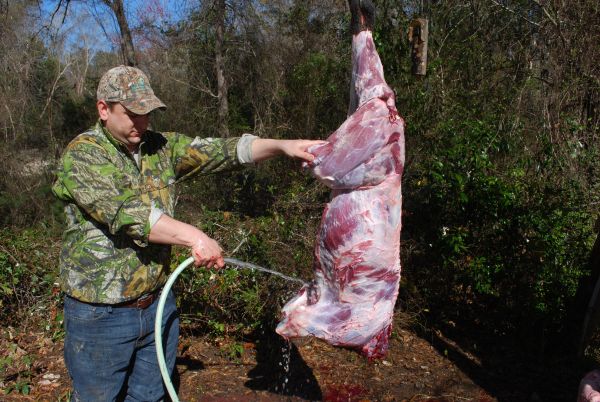 Step 10: Using the reciprocating saw, split the inside of the pelvis and the length of the rib cage, exposing the viscera.
Step 10: Using the reciprocating saw, split the inside of the pelvis and the length of the rib cage, exposing the viscera.
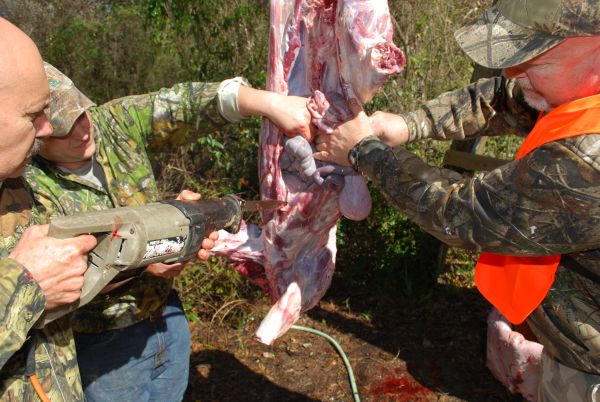 Step 11: Remove the viscera by pulling downward with one hand and cutting connective tissue loose with a knife in the other.
Step 11: Remove the viscera by pulling downward with one hand and cutting connective tissue loose with a knife in the other.
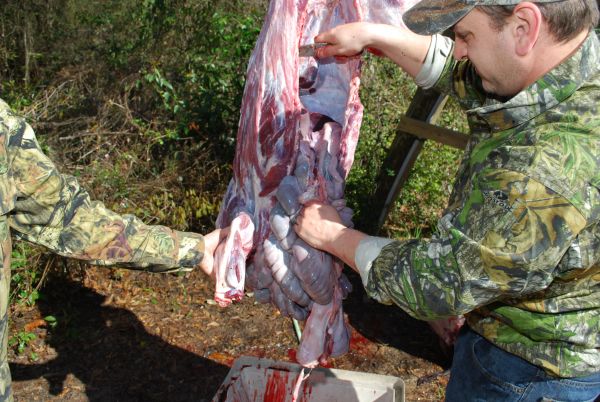 Step 12: The heart and liver are saved, and the viscera are discarded. Care must be taken when removing the liver not to pierce the small, translucent gall bladder.
Step 12: The heart and liver are saved, and the viscera are discarded. Care must be taken when removing the liver not to pierce the small, translucent gall bladder.
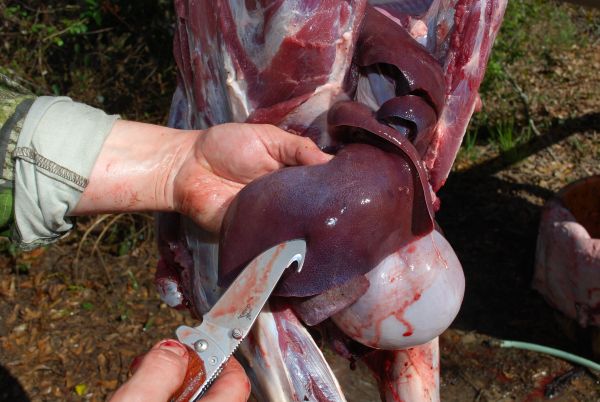 Step 13: After another thorough rinsing, remove the front shoulders by cutting through the muscle of each joint.
Step 13: After another thorough rinsing, remove the front shoulders by cutting through the muscle of each joint.
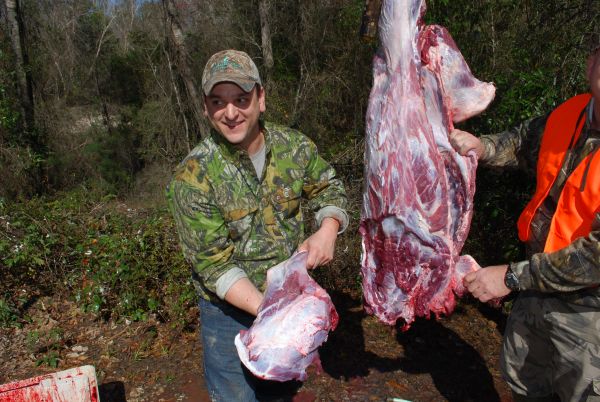 Step 14: Cut the carcass deeply across the back just below the hams.
Step 14: Cut the carcass deeply across the back just below the hams.
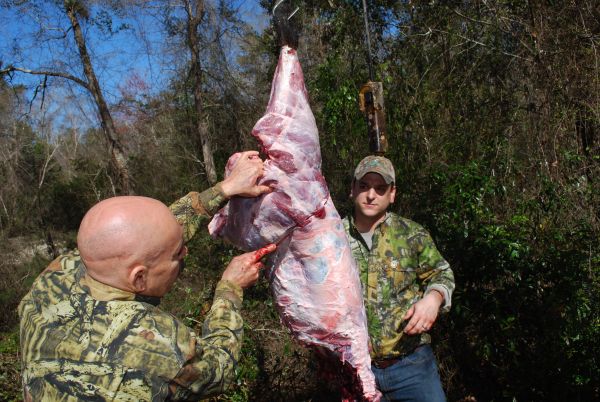 Step 15: From the incision, cut downward, closely following the backbone. This is followed by a parallel cut downward following the rib cage. The two cuts will free the boneless loin. Repeat the cuts to free the second loin.
Step 15: From the incision, cut downward, closely following the backbone. This is followed by a parallel cut downward following the rib cage. The two cuts will free the boneless loin. Repeat the cuts to free the second loin.
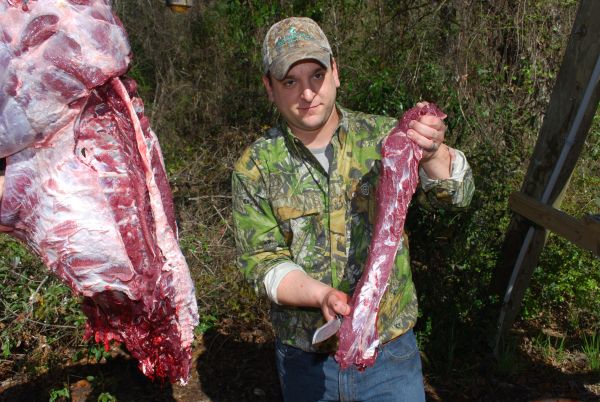 Step 16: The back frame is cut loose from below the hams and saved for scraps, and then the saw is used to split the two hams apart. Finally, the last ham is cut loose from the leg it is hanging from with the saw.
Step 16: The back frame is cut loose from below the hams and saved for scraps, and then the saw is used to split the two hams apart. Finally, the last ham is cut loose from the leg it is hanging from with the saw.
